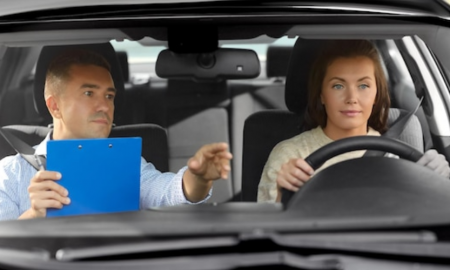
Ohio Driver’s License Laws Are Changing for Young Adults in 2025

Getting a driver’s license is a milestone, but for young adults in Ohio, the process is about to become more structured. Starting September 30, updated laws will require anyone 21 or younger to complete a full driver’s education program before earning a license.
The goal is clear—build safer habits on the road and reduce the high number of accidents involving young drivers.
What’s Changing in Driver’s Education
For years, Ohio teens under 18 had to complete formal driver’s education, while those between 18 and 21 could bypass it entirely. That gap is closing. Under the new rules, individuals 21 and younger must complete:
1. 24 hours of classroom instruction
2. 8 hours of in-car training with a licensed instructor
3. 50 hours of practice driving with an adult 21 or older

Freepik | The new Ohio law mandates 8 hours of professional driving instruction for all drivers under 21.
These requirements align young adult drivers with the same standards already set for teenagers, ensuring consistent training before anyone gets behind the wheel independently.
Why the Change Matters
Driving without structured training often leaves young adults unprepared for real-world scenarios. Many lack understanding of insurance basics, defensive driving, or how to respond in emergencies. Officials believe that requiring formal education will bridge this gap.
Statistics back up the change. More than half of fatal crashes in Ohio involve drivers aged 18 or 19. Lawmakers expect extending education requirements to cover those up to 21 will significantly cut down on avoidable collisions.
Support From Experts and Lawmakers
Driving schools and state officials widely support the updated laws. Instructors have long voiced concerns about inexperienced drivers getting licenses without training. Classroom lessons paired with practical driving help build confidence, teach responsibility, and reinforce safe habits.
State legislators emphasized that the new law is not just about memorizing road signs or written tests. It’s about building real experience with professional guidance, which can’t be replaced by casual practice alone.
Impact on International Drivers
Another part of the update extends the same requirements to international students and adults under 21. Since July 1, Ohio has applied uniform training standards for everyone seeking a license. This ensures that all drivers—whether local residents or newcomers—develop the same level of preparedness before taking the wheel.
Broader Benefits of the Law

Freepik | Having more trained drivers helps communities by reducing accidents and increasing safety.
The long-term benefits of the change extend beyond individual safety. With more trained drivers on the road, communities gain safer streets and reduced accident rates. Insurance companies may also respond positively, as lower crash risks often lead to more affordable coverage options for responsible drivers.
Requiring driver’s education at a younger age also encourages healthier habits early on. Skills learned through formal training, such as managing distractions, maintaining safe speeds, and handling difficult road conditions, stay with drivers throughout their lives.
What Young Adults Should Expect
1. Anyone under 21 planning to get a license after September 30 should prepare for the new steps:
2. Enroll early in a state-approved driving school to secure classroom and behind-the-wheel hours.
3. Allocate time for the 50 hours of supervised practice, which must be documented.
4. Plan ahead, as scheduling lessons with instructors may take time, especially during peak months.
Understanding these requirements early helps avoid delays and ensures new drivers meet all legal obligations without last-minute hurdles.
The updated laws on driver’s education are more than just new hurdles for young adults—they represent an investment in safety and responsibility. By raising the standards to include 18-to-21-year-olds, Ohio is addressing a gap that contributed to high crash rates among young drivers. These changes create a stronger foundation for driving skills, protect communities, and shape safer roads for years to come.
More inDriving
-
`
Adults in Ohio Face Stricter Rules to Obtain Driver’s License
Ohio has passed a new law that will change the way adults under 21 get their driver’s licenses. Signed into law...
July 31, 2025 -
`
Gen Z Craves Career Guidance, But Their Parents Are Struggling Too
Gen Z is stepping into the future with curiosity and ambition—but they’re not doing it alone. A growing number of teens...
July 25, 2025 -
`
Do Car Insurance Companies Offer Pay-As-You-Go Plans?
Car insurance premiums often feel unfair to people who rarely drive. Yet, most traditional auto policies still charge a fixed monthly...
July 17, 2025 -
`
Why the Koenigsegg Sadair Spear Is the Ultimate Hypercar Beast
Koenigsegg has revealed a new beast—the Sadair’s Spear. Tuning its focus on raw performance and brutal speed, this hypercar marks the...
July 11, 2025 -
`
Which States Have the Safest—and Riskiest—Drivers in America?
Driving safety isn’t just about skill. It’s also about location. A recent nationwide report shines a spotlight on where drivers are...
July 4, 2025 -
`
How to Save on Tesla Car Insurance Without Compromising Coverage
Owning a Tesla often brings savings on fuel and a futuristic driving experience, but the conversation changes quickly when it comes...
June 26, 2025 -
`
10 Weird Cars That Turned Heads and Won Hearts
Some cars turn heads with speed, others with luxury—but a rare few grab your attention simply by being delightfully strange. From...
June 20, 2025 -
`
Next-Gen Jeep Cherokee Expected to Arrive by Late 2025
After a break of two years, Jeep is prepared to relaunch the Cherokee brand. The automaker confirmed the return with fresh...
June 12, 2025 -
`
9 Tips to Make Night Driving Safer and Less Frightening
Once the sun dips below the horizon, driving becomes more than just a commute—it becomes a challenge. Limited visibility, harsh glares,...
June 6, 2025















You must be logged in to post a comment Login